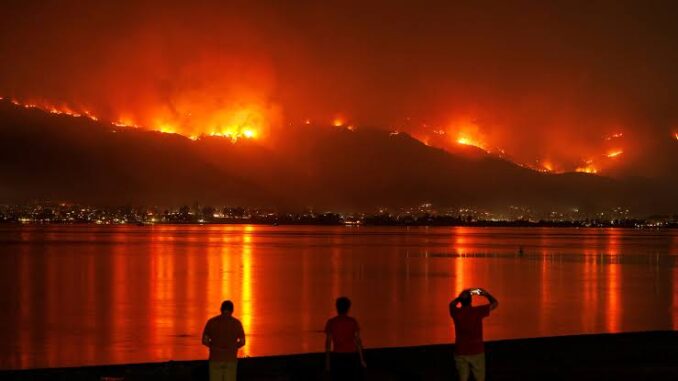
UPDATE: New Information on Fires That Have Burned Thousands of Acres in Western North Dakota
In recent weeks, wildfires have ravaged thousands of acres across western North Dakota, prompting new concerns as the fires continue to spread. The affected areas, already grappling with dry conditions and strong winds, have seen significant damage to land, wildlife, and agricultural assets. Firefighting teams are working tirelessly to contain the blazes, but the situation remains fluid as new developments emerge.
As of the latest update, the wildfires have burned through more than 15,000 acres in various parts of the region, with the hardest-hit areas located in McKenzie, Billings, and Golden Valley counties. Local officials have reported that the fires have been particularly challenging to control due to the combination of drought conditions, high winds, and the region’s rugged terrain. Satellite images show large swaths of land engulfed in flames, with smoke plumes visible from miles away.
Farmers and ranchers in the region are reporting significant losses, as thousands of acres of grazing land have been consumed by the fires. Several homes and outbuildings have also been destroyed, though no fatalities have been reported. Livestock losses remain unclear, but officials are concerned that the fires could have a lasting impact on the area’s agricultural economy.
Investigators are still working to determine the exact cause of the fires, but early reports suggest that human activity, combined with extreme weather conditions, may be to blame. Some of the fires are believed to have been sparked by equipment malfunctions, while others may have been caused by accidental ignitions from campfires or discarded cigarettes.
The National Weather Service has confirmed that western North Dakota has been experiencing one of its driest periods in recent history, with below-average rainfall and strong winds contributing to the rapid spread of the fires. The ongoing drought has left vegetation dry and highly flammable, creating ideal conditions for wildfires to ignite and spread quickly.
Local, state, and federal firefighting agencies have deployed hundreds of personnel to battle the blazes. Firefighters have been working around the clock, using both ground crews and aerial support to contain the fires. Fire retardant drops from planes and helicopters have helped slow the progression of the flames, though containment efforts remain difficult due to the challenging weather conditions.
The North Dakota Department of Emergency Services has coordinated with local officials to provide additional resources, including firefighting equipment and personnel from neighboring states. National Guard units have also been deployed to assist in evacuation efforts and to protect critical infrastructure threatened by the advancing fires.
Authorities have issued mandatory evacuation orders for several small communities and ranches in the path of the fires, with shelters set up in nearby towns to accommodate displaced residents. So far, no injuries have been reported, but officials are urging residents in high-risk areas to remain vigilant and follow evacuation orders as the fires continue to spread unpredictably.
Air quality in the region has deteriorated as heavy smoke blankets much of western North Dakota. Health officials are advising residents, especially those with respiratory conditions, to limit outdoor activities and stay indoors whenever possible.
While firefighters have made some progress in containing the fires, the situation remains critical. Weather forecasts for the coming days predict continued dry conditions with only light rain, which is unlikely to make a significant impact on the ongoing fires. Wind gusts are expected to increase, posing further challenges to firefighting efforts.
Local authorities are working to assess the full extent of the damage and determine what resources will be needed for recovery once the fires are brought under control. For now, the focus remains on containment and ensuring the safety of residents and emergency personnel.
The wildfires in western North Dakota are a stark reminder of the growing threat posed by extreme weather and climate change. As the state continues to deal with the immediate effects of the fires, long-term strategies for fire prevention and land management are likely to become a key focus in the months ahead.
Read more on;https://sportupdates.co.uk

Leave a Reply